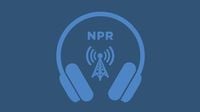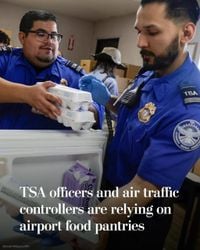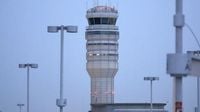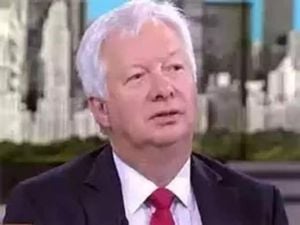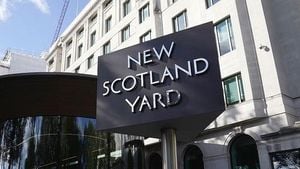Since the government shutdown began on October 1, 2025, the nation’s air travel system has been thrown into a state of mounting chaos. Thousands of flight delays have rippled through major U.S. airports, with the brunt of the disruption falling on weary travelers and overworked federal employees. The core of the crisis? A staffing shortage among air traffic controllers and Transportation Security Administration (TSA) workers who, despite being considered essential, have been required to work without pay for weeks. As the shutdown drags on, the pressure is mounting—not just on those clocking in each day, but on lawmakers in Washington who hold the keys to ending the standoff.
According to reporting from FOX 28 Spokane and NerdWallet, the shutdown’s impact has been swift and severe. On October 19 alone, more than 5,800 flights were delayed nationwide. Southwest Airlines reported the highest number of delays among all carriers, while Chicago O’Hare International Airport saw more disruptions than any other airport in the country. The cause? About 10% of air traffic controllers have called out sick since the shutdown began, forcing the remaining workforce to shoulder an even heavier burden. TSA workers, also deemed essential, are in the same boat—showing up for work each day, but without a paycheck.
The consequences are felt far beyond the airport security lines. According to Nick Daniels, president of the National Air Traffic Controllers Association (NATCA), “They work six days a week, 10 hours a day and they usually only have four days off in an entire month. Those are already heroic efforts.” It’s no wonder, then, that some have chosen to call out sick rather than continue working under such grueling conditions without compensation. This uptick in absences has strained the system, causing delays, cancellations, and a cascading loss of confidence among travelers and businesses alike.
Transportation Secretary Sean Duffy has responded with a hard line, threatening to fire what he calls the “problem children” among the controllers who do not show up for their shifts. The administration estimates that about one in ten controllers have been absent since the shutdown began—a figure that far exceeds the typical rate of callouts. Duffy’s stance is clear, but it’s also controversial, raising questions about how much pressure can be put on essential workers before the system buckles entirely.
The current crisis has echoes of the 2018-2019 government shutdown, when mass callouts by air traffic controllers and TSA officers ground air travel to a near halt, ultimately pressuring lawmakers and then-President Donald Trump to broker a deal. Back then, a handful of controller absences were enough to snarl operations at New York’s LaGuardia Airport and elsewhere, bringing the issue to the front pages and, some say, forcing a political solution. Yet, as Daniels emphasized at a recent press conference, “Air traffic controllers are not responsible for starting a shutdown, and we’re not responsible for ending shutdowns. Only our elected officials are, and our elected officials need to end this shutdown today.”
While the Trump administration is reportedly seeking hundreds of millions of dollars to pay controllers during the shutdown and stem the tide of callouts, the underlying issue—a chronic shortage of air traffic controllers—remains unresolved. As of October 14, 2025, there were just 10,800 certified air traffic controllers in the United States, well below the Federal Aviation Administration’s (FAA) target of 14,633. The deficit has forced existing controllers to work extended hours, often with few days off, as Daniels noted. The situation is not the result of a purge of federal employees following Trump’s second term; while some maintenance staff were let go, no air traffic controllers were removed at that time. Instead, the shortage is the result of a complex web of factors, including a hiring freeze in fiscal year 2013, the COVID-19 pandemic, and the previous government shutdown between 2018 and 2019, all of which slowed hiring and training efforts.
The FAA has made strides to close the gap, announcing in September 2024 that it exceeded its goal by hiring 1,800 new air traffic controllers—the largest intake in nearly a decade. Yet, as Daniels points out, “past hiring efforts haven’t been enough.” Training new controllers is a long process, with the FAA hiring candidates two to three years in advance of expected retirements or departures to allow time for rigorous preparation. That means any disruption—like a government shutdown—can have long-lasting effects on the agency’s ability to maintain safe and efficient operations.
Even as the FAA’s air traffic control training academy in Oklahoma City remains open, trainees are feeling the impact of the shutdown. According to recent reporting, the academy is operating in spite of the funding lapse, but the uncertainty and lack of pay for essential personnel have cast a shadow over the next generation of controllers. As of October 24, 2025, trainees and seasoned professionals alike are bracing for the shutdown’s continued fallout.
The gridlock in Washington shows little sign of easing. Since October 1, the Senate has voted a dozen times on short-term funding measures, but each attempt—whether from Democrats or Republicans—has failed to pass. Democrats are holding out for concessions on health care spending, while Republicans are refusing to budge. With both sides entrenched, the shutdown has stretched into its fourth week, leaving essential workers in limbo and travelers frustrated.
The economic consequences are staggering. The U.S. Treasury estimates that the shutdown could cost the economy as much as $15 billion in lost gross domestic product (GDP) per week. The effects extend well beyond the aviation sector: thousands of other federal employees have been furloughed, social benefit programs like WIC and SNAP are set to halt beginning November 1, and permitting and loan programs for small businesses are paused. Federal courts are running out of funds and limiting operations, while services like Social Security and Medicare are operating at reduced levels. It’s a far-reaching crisis with no easy fix.
As the days tick by, the question on everyone’s mind is whether the mounting disruption—particularly in air travel—will be enough to force lawmakers back to the negotiating table. History suggests that a tipping point may be reached if the pain becomes acute enough. After all, during the 2018-2019 shutdown, it was the chaos at airports that finally broke the political deadlock. But as Daniels and other union leaders are quick to remind the public, the responsibility for ending the shutdown lies squarely with elected officials, not the essential workers caught in the crossfire.
For now, the nation waits. Controllers continue to guide planes safely through the skies, trainees prepare for a future that feels increasingly uncertain, and travelers check departure boards with a mix of hope and resignation. The shutdown’s end remains out of reach, but its toll—on workers, on the economy, and on the American public—is growing harder to ignore.
